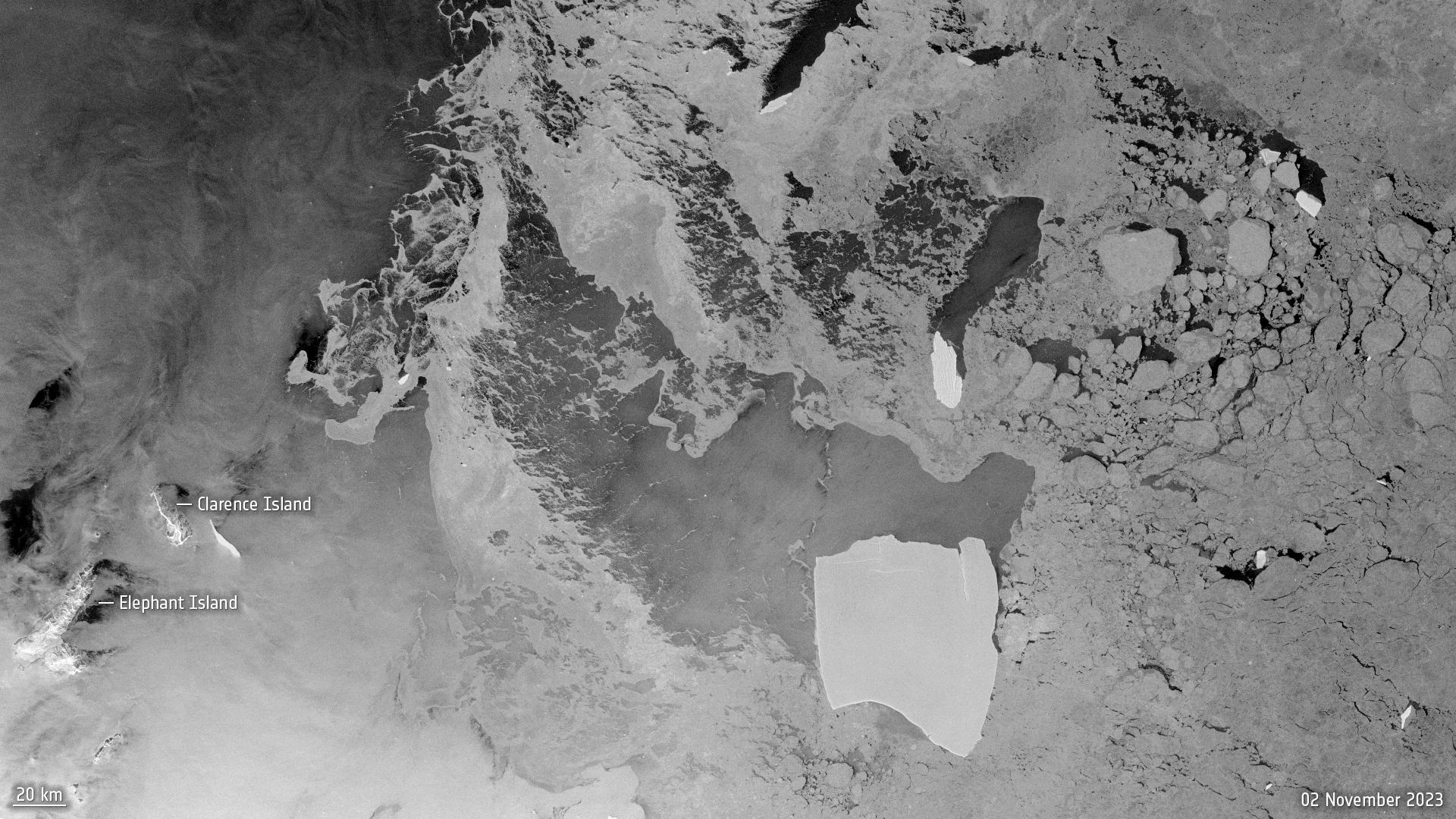After being grounded on the ocean floor for well over four decades, the largest iceberg in the world is on the loose.
The iceberg, known as A23a, calved from the Filchner-Ronne ice shelf in West Antarctica in 1986, but quickly ran aground. By 2020, it had lost its grip on seafloor and began drifting in the Weddell Sea. Scientists say that it is not unusual for icebergs to become grounded, but over time they shrink enough to unground and float.
Now, however, driven by winds and currents, A23a has put a spurt on and is heading quickly away from Antarctic waters – as this animation of Copernicus Sentinel-1 images shows. The animation uses satellite images from 2 November 2023, 14 November 2023 and 26 November 2023.
Like most icebergs from the Weddell sector, A23a is likely to end up in the South Atlantic on a path called iceberg alley.
Covering around 4000 sq km, more than four times the size of New York city, and around 400 m thick, A23a is currently the world’s biggest iceberg.
Another image, also using aquisitions from Copernicus Sentinel-1, shows how the iceberg rotated and travelled between 2 November 2023 and 26 November 2023.



 Image:
After being grounded on the ocean floor for well over four decades, the largest iceberg in the world is on the loose.
Image:
After being grounded on the ocean floor for well over four decades, the largest iceberg in the world is on the loose.